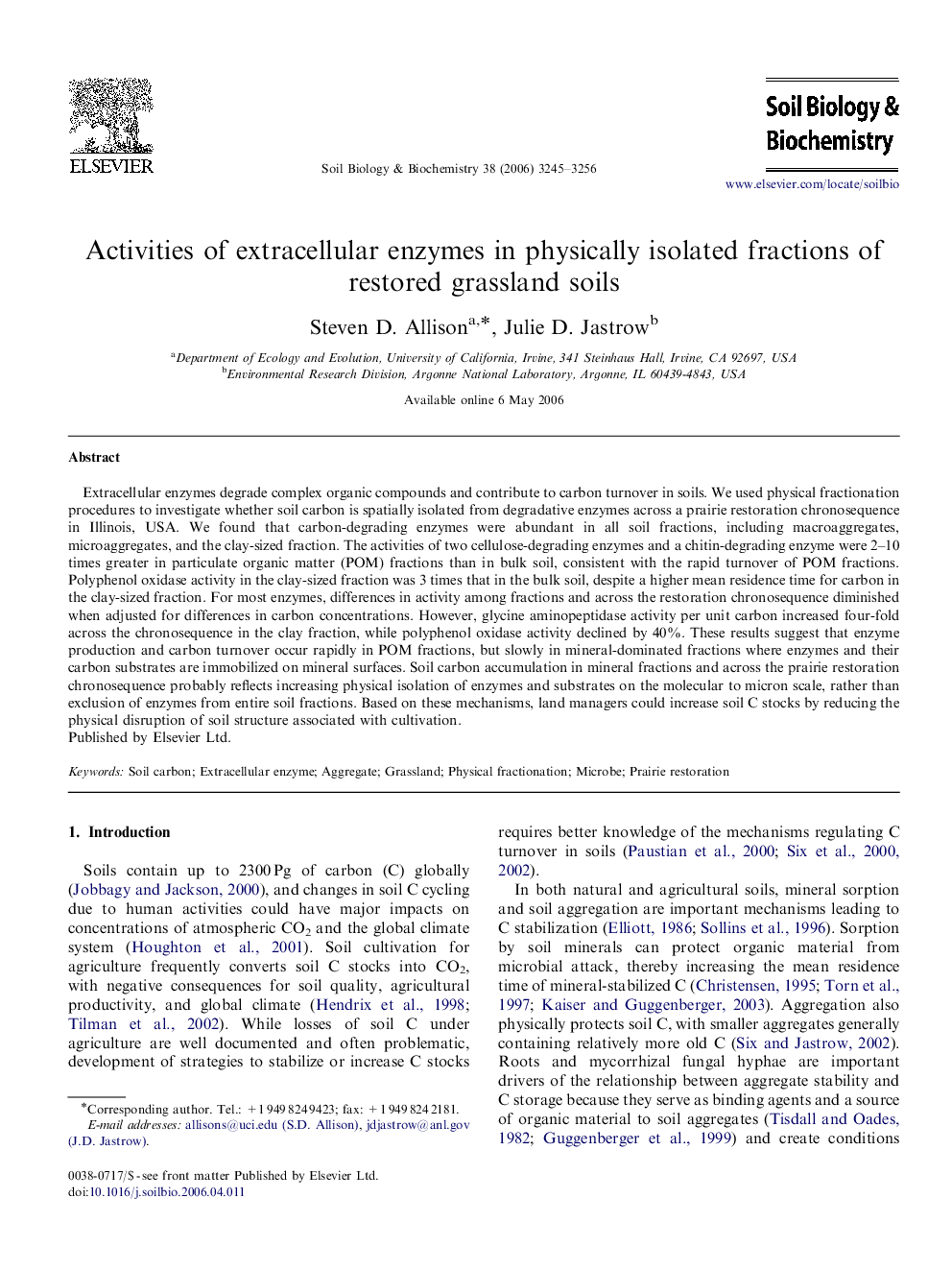| Article ID | Journal | Published Year | Pages | File Type |
|---|---|---|---|---|
| 2026003 | Soil Biology and Biochemistry | 2006 | 12 Pages |
Extracellular enzymes degrade complex organic compounds and contribute to carbon turnover in soils. We used physical fractionation procedures to investigate whether soil carbon is spatially isolated from degradative enzymes across a prairie restoration chronosequence in Illinois, USA. We found that carbon-degrading enzymes were abundant in all soil fractions, including macroaggregates, microaggregates, and the clay-sized fraction. The activities of two cellulose-degrading enzymes and a chitin-degrading enzyme were 2–10 times greater in particulate organic matter (POM) fractions than in bulk soil, consistent with the rapid turnover of POM fractions. Polyphenol oxidase activity in the clay-sized fraction was 3 times that in the bulk soil, despite a higher mean residence time for carbon in the clay-sized fraction. For most enzymes, differences in activity among fractions and across the restoration chronosequence diminished when adjusted for differences in carbon concentrations. However, glycine aminopeptidase activity per unit carbon increased four-fold across the chronosequence in the clay fraction, while polyphenol oxidase activity declined by 40%. These results suggest that enzyme production and carbon turnover occur rapidly in POM fractions, but slowly in mineral-dominated fractions where enzymes and their carbon substrates are immobilized on mineral surfaces. Soil carbon accumulation in mineral fractions and across the prairie restoration chronosequence probably reflects increasing physical isolation of enzymes and substrates on the molecular to micron scale, rather than exclusion of enzymes from entire soil fractions. Based on these mechanisms, land managers could increase soil C stocks by reducing the physical disruption of soil structure associated with cultivation.
